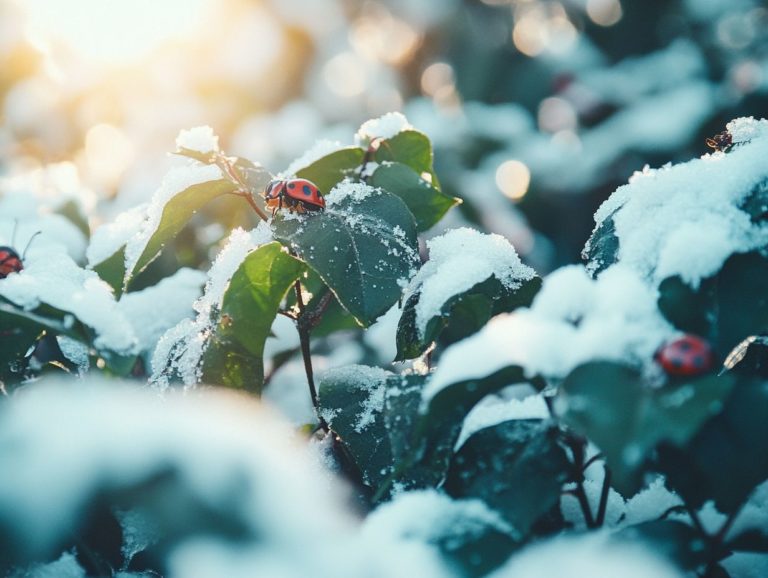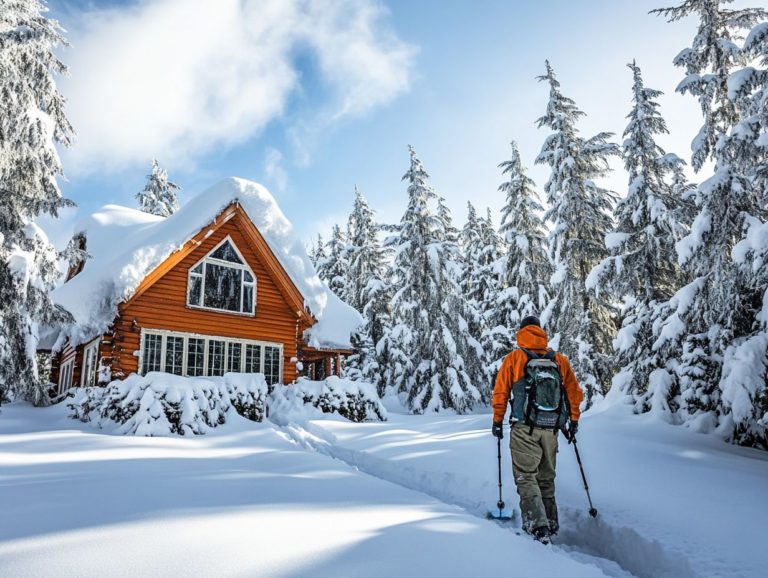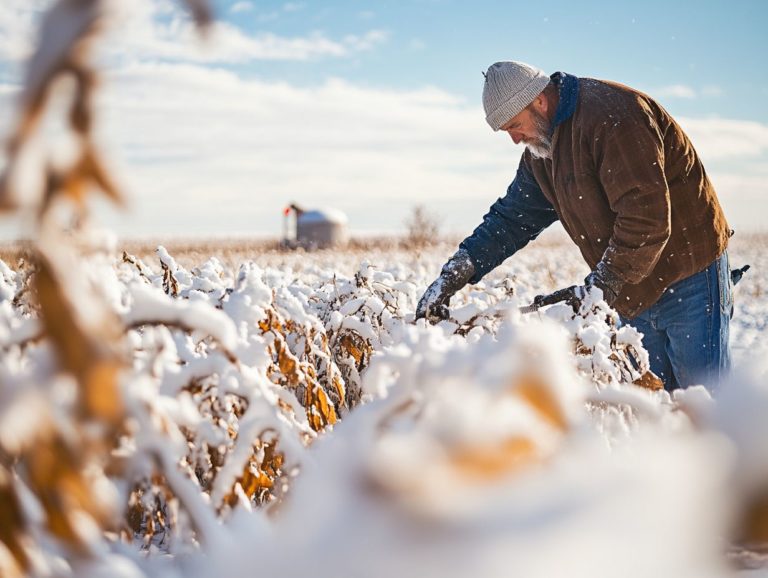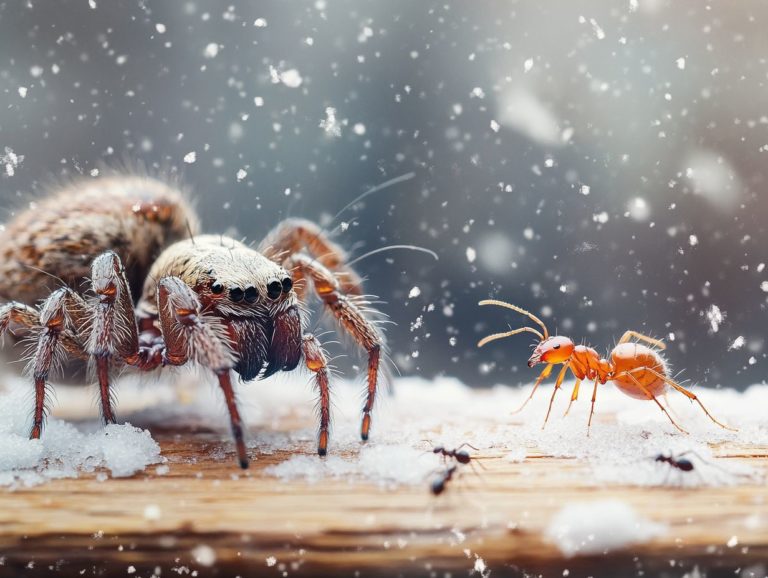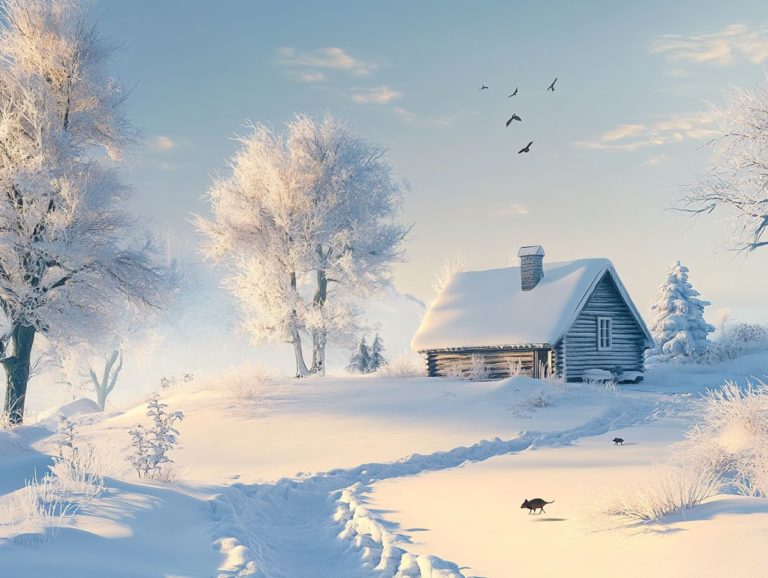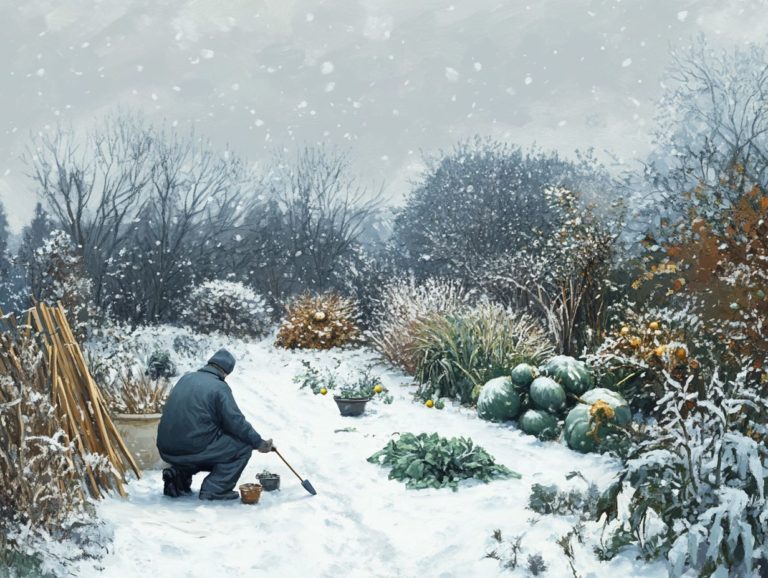How to Use Traps Effectively in Winter
Get ready for an exhilarating winter trapping adventure! Winter trapping includes fox and coyote trapping. It presents rewards and challenges that require understanding various traps and how they work.
This guide delves into the fundamental aspects of winter trapping, guiding you through the process of selecting the right equipment and preparing for the upcoming season.
Discover the ideal locations and techniques for setting traps, including effective sets and bait stations. We also provide essential tips for maintaining them to maximize your success.
Whether you re a seasoned trapper or just embarking on this journey, this guide provides valuable insights to elevate your winter trapping experience.
Contents
- Key Takeaways:
- Understanding Winter Trapping
- Choosing the Right Trap for Your Needs
- Preparing for Trapping Season
- Setting Traps in Winter
- Checking and Maintaining Traps
- Tips for Successful Trapping in Winter
- Frequently Asked Questions
- What are the benefits of using traps in the winter?
- What types of traps should I use in the winter?
- How do I set traps in the winter?
- What is the best bait to use in winter traps?
- How often should I check my traps in the winter?
- Are there any safety precautions I should take when using traps in the winter?
Key Takeaways:
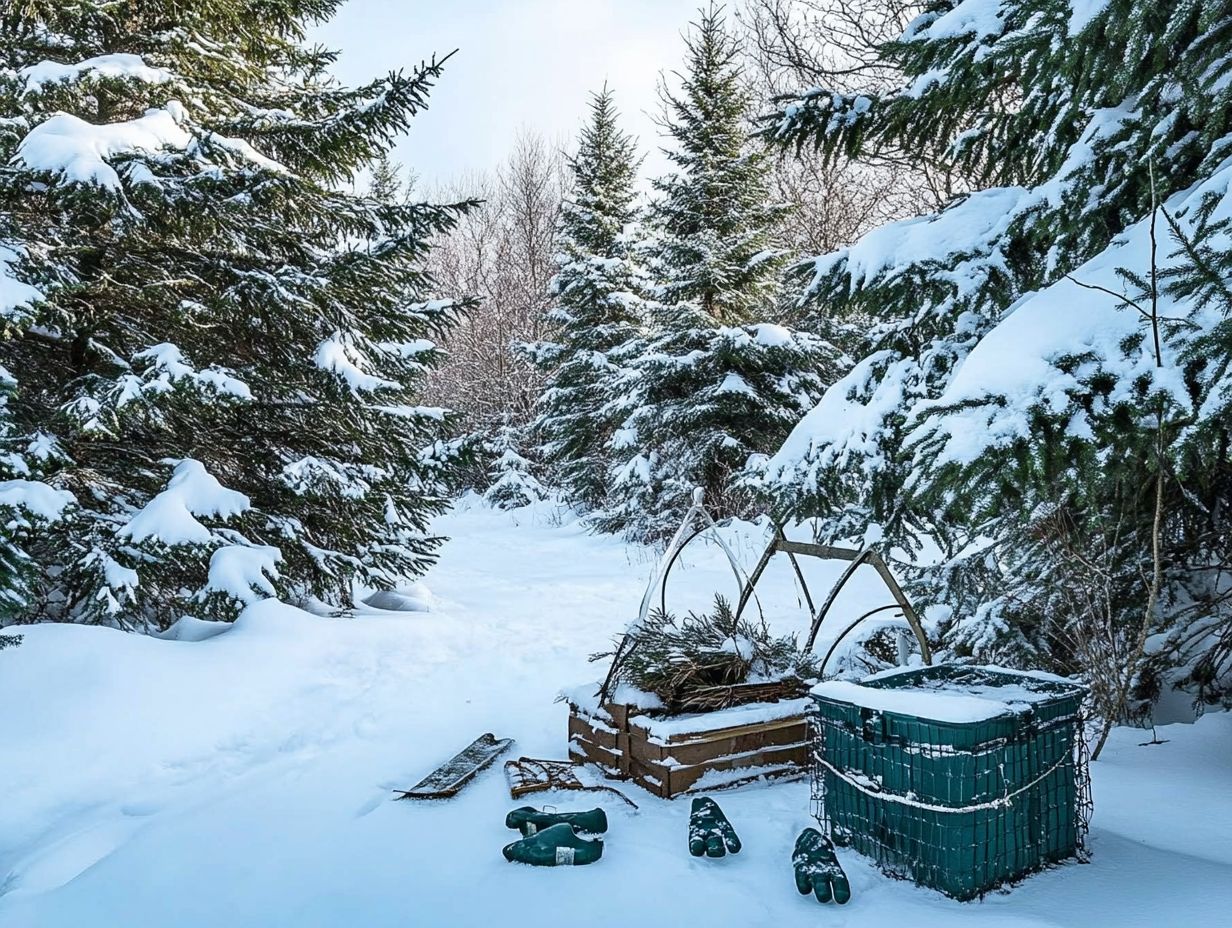
- Proper preparation is key to successful trapping in winter. Consider factors such as weather conditions, animal behavior, and trap placement before setting traps.
- Regular maintenance and troubleshooting of traps is crucial for a successful trapping season. This includes checking and adjusting trap triggers, as well as replacing worn-out parts.
- Expert advice and recommendations can greatly improve your trapping success in winter. Research and gather tips from experienced trappers, and don’t be afraid to try new techniques and methods.
Understanding Winter Trapping
Understanding winter trapping is crucial for success in the field, especially in states like Michigan, where winter fox and coyote trapping are commonplace. You’ll need to take several factors into account, such as snow conditions and animal behavior, as well as the unique challenges that winter brings like frozen ground and snow cover, which can impact your trap sets.
Observing tracks gives you valuable insights into the movements and habits of foxes and coyotes. This can guide you to more effective trapping strategies during winter.
Types of Traps and How They Work
In winter trapping, you ll encounter various types of traps, each thoughtfully designed with specific mechanisms to effectively capture target animals like foxes and coyotes. Foothold traps and snares are particularly popular among seasoned trappers.
These traps serve distinct purposes. For instance, foothold traps grip an animal s paw without causing fatal harm, allowing for a live capture, while snares can quickly immobilize them. You can even customize each technique to align with the behavioral patterns of specific species.
Consider scent post sets; they leverage the natural curiosity of animals, enticing them to investigate an appealing scent, which significantly boosts your chances of capture. Conversely, dirt hole sets mimic natural feeding behaviors to attract animals on the lookout for food.
While foothold traps offer a humane way to capture animals, they do require careful placement to avoid trapping non-target species. On the flip side, snares are undeniably effective, but they demand precise knowledge of animal movement to prevent accidentally ensnaring unintended wildlife.
Choosing the Right Trap for Your Needs
Selecting the ideal trap tailored to your specific needs is an essential step in achieving a successful trapping season. It’s vital to consider the diverse array of trapping equipment available and how each option aligns with local trapping regulations and the with landowners’ permission.
Factors to Consider
When selecting the ideal trap, several factors warrant your consideration, including bait locations, timing, and the effectiveness of pre-baiting strategies. Pre-baiting is placing bait before setting traps. This helps animals become accustomed to the food source. These elements can significantly enhance your chances of success.
Understanding the specific preferences of the animals you re targeting is crucial in this process, as different species are drawn to distinct types of bait. For example, some may be enticed by sweet scents, while others might find strong-smelling proteins irresistible.
You should also keep in mind that seasonal changes can influence animal behavior, which means you may need to adjust both your bait and trap positioning accordingly. Regular maintenance of your traps is equally essential; ensuring they function correctly and remain appealing to your target is key.
A touch of creativity goes a long way; adapting your trapping techniques in response to changing environmental conditions can lead to improved results. This might involve switching up bait types or repositioning traps as necessary.
Take the time to explore your options. This choice could make or break your trapping season!
Preparing for Trapping Season
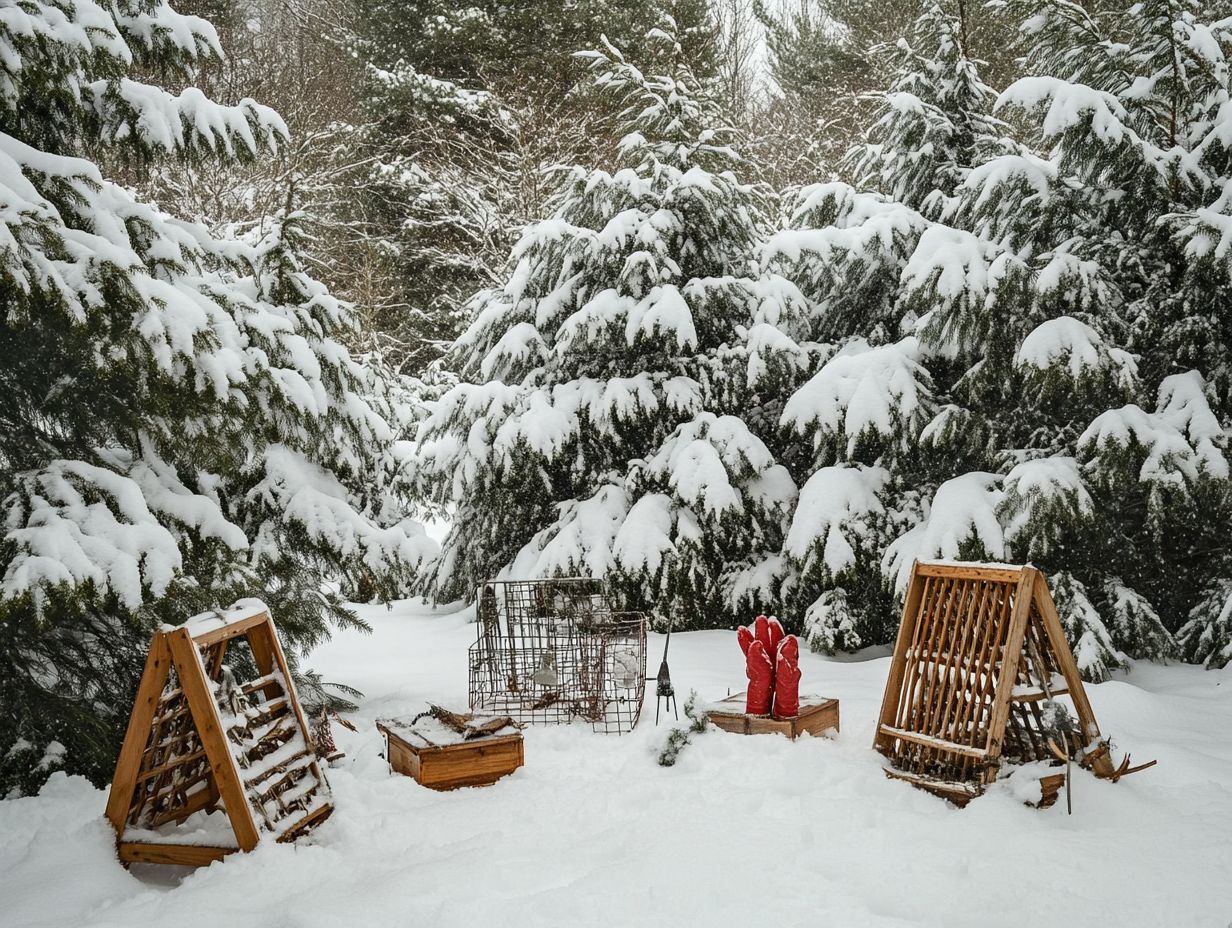
Preparing for the trapping season starts in autumn. It requires careful planning. Develop effective bait management strategies. Immerse yourself in the vast knowledge available in the trapping community.
Attend outdoor seminars and consult trapping guides. These can greatly enhance your understanding and skills, ensuring you’re well-equipped for the season ahead.
Gathering Supplies and Planning Strategy
Gathering the right supplies and planning your trapping strategy is crucial for maximizing success. Consider the effectiveness of various baits, like venison, and the need for top-notch trapping equipment.
To boost your chances of a fruitful season, it s not enough to simply stockpile essential items such as traps. Diversify the types of lures and bait scraps you use to make all the difference.
When selecting bait, think about what local wildlife is most attracted to. Employ a mix of scents to keep your traps irresistible. Strategic placement of traps in areas with clear signs of animal movement can significantly enhance their effectiveness. Take the time to scout the terrain thoroughly before you set up.
Know the local trapping regulations. This ensures compliance and promotes ethical practices in your trapping endeavors.
Setting Traps in Winter
When setting traps in winter, adopt a strategic approach. Focus on selecting the most advantageous locations influenced by snow trapping conditions.
Pay close attention to animal trails and travel paths. These reveal the active routes frequented by foxes and coyotes. Observe carefully! It can dramatically boost your chances of trapping success.
Best Locations and Techniques
The best locations for setting traps depend on your strategic choices regarding bait placement and effective concealment methods. This is especially important in late winter when snow can obscure your traps from both animals and prying eyes.
Choosing the right bait can significantly improve your chances of attracting the wildlife you re targeting. This aligns with their natural instincts.
Conceal the trap under natural foliage or incorporate snow into your camouflage. It s crucial to handle the traps with care. Regularly check them and maintain them in top condition to ensure optimal operation. By fine-tuning these techniques, you can greatly enhance your trapping success during this challenging season.
Checking and Maintaining Traps
Regularly check your traps! This is crucial for maximizing your trapping success. Neglecting these tasks can diminish the attractiveness of your bait and lead to missed opportunities, especially during the critical winter trapping season.
Prioritizing this upkeep not only enhances your effectiveness but also maximizes your chances in the field.
Regular Maintenance and Troubleshooting
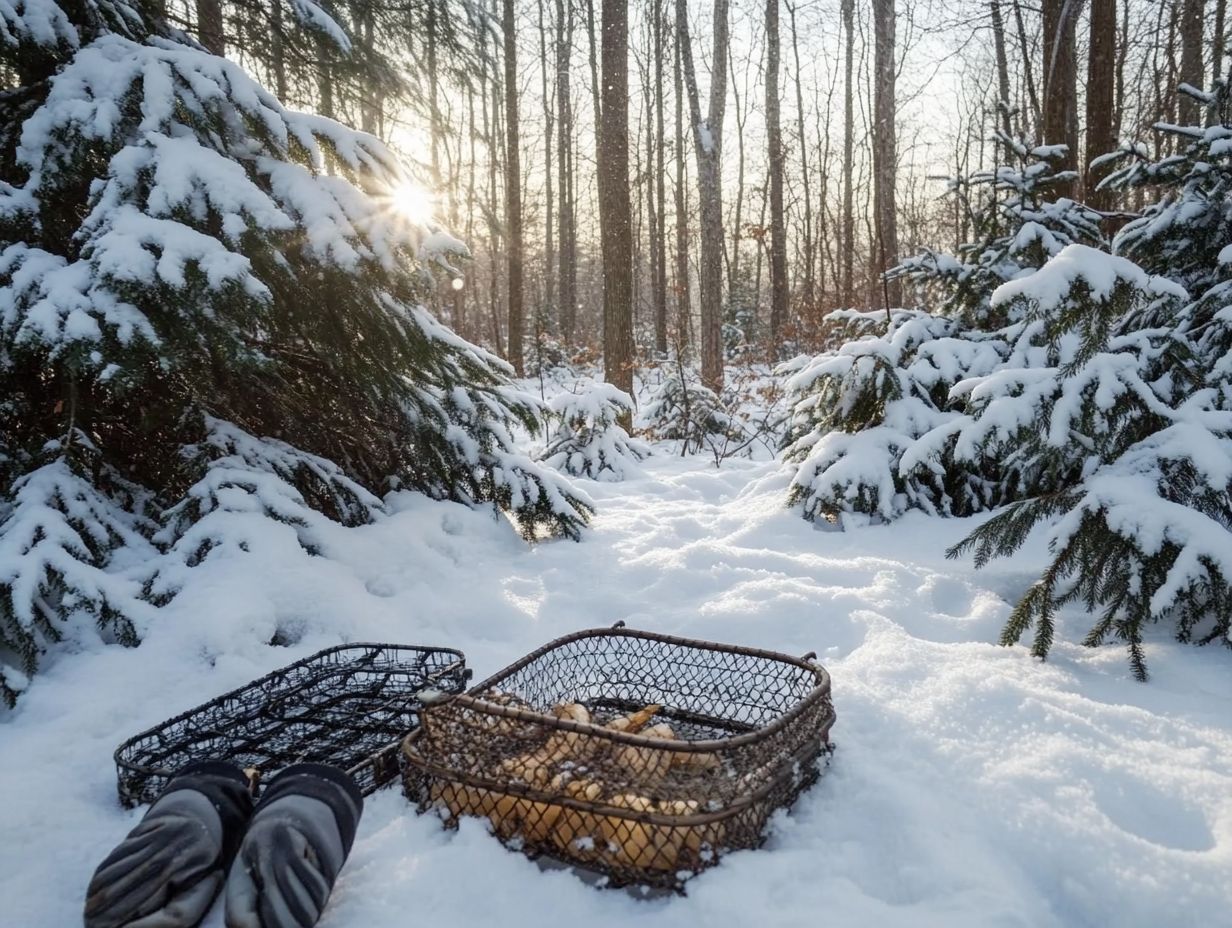
Effective trapping requires regular maintenance and proper handling. This is especially important when faced with varying snow conditions that can influence bait timing and overall efficiency.
Conduct routine inspections to ensure your traps are free from snow and ice buildup. These can severely hinder their effectiveness. Regular checks also allow you to replace worn components and assess the freshness of your bait. Improper baiting can significantly delay your success.
Understanding how fluctuating temperatures affect animal behavior can enhance your strategy. Adapt your trapping techniques accordingly. By proactively addressing common issues like trigger malfunctions and ensuring your traps are well-positioned, you can optimize your efforts and enjoy fruitful results throughout the winter months.
Tips for Successful Trapping in Winter
For a successful winter trapping season, embrace expert advice and insights from seasoned trappers. By leveraging techniques shared in outdoor seminars and utilizing resources offered by the trapping community, you can elevate your skills and ensure a fruitful experience.
Expert Advice and Recommendations
Expert advice in the trapping community underscores the importance of creativity in trapping and effective bait management.
Cooperating with landowners is essential for navigating local regulations. By embracing innovative techniques, you can enhance your success while aligning your strategies with sustainable practices.
Cultivating positive relationships with landowners facilitates smoother operations and opens doors for support. Understanding local regulations is crucial to avoid costly missteps and create a favorable environment for everyone involved.
These insights empower you to maximize your efforts while honoring the community and ecology. This ultimately leads to more rewarding outcomes in the field.
Frequently Asked Questions
What are the benefits of using traps in the winter?
Using traps effectively in winter is crucial for controlling pest populations, protecting your property from damage, and reducing the risk of disease transmission.
What types of traps should I use in the winter?
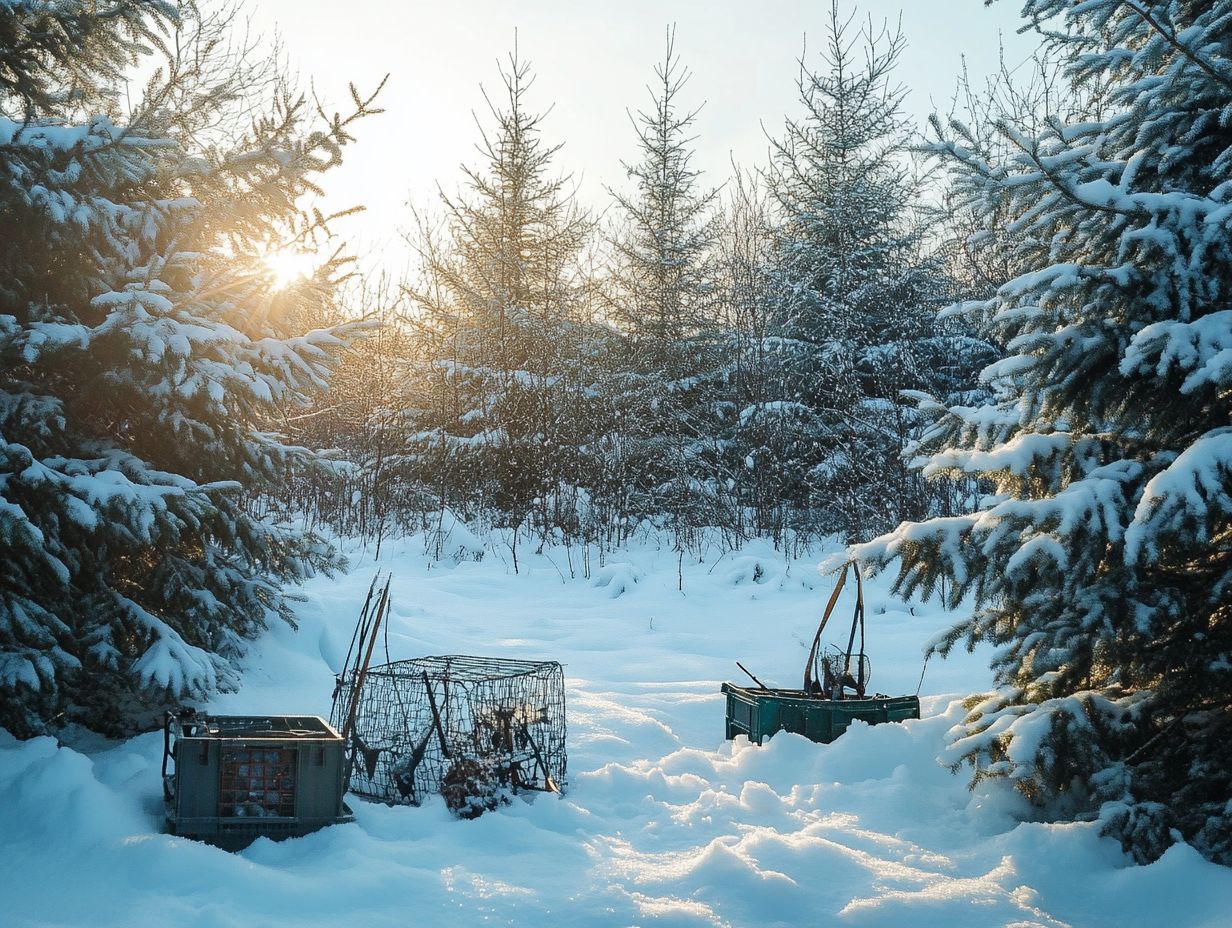
In winter, use traps designed for colder temperatures, such as snap traps or live traps with insulation or heaters.
How do I set traps in the winter?
When setting traps in winter, consider the location, weather conditions, and bait used. Ensure the trap is securely anchored and protected from snow and ice.
What is the best bait to use in winter traps?
Bait options may be limited in winter due to scarce food for pests. Good choices include peanut butter, bacon, and seeds or grains.
How often should I check my traps in the winter?
Check traps daily in winter, as pests may be more active in search of food and shelter. This ensures any trapped animals do not suffer from exposure to cold temperatures.
Are there any safety precautions I should take when using traps in the winter?
Wear gloves and handle traps carefully to avoid injuries, especially in cold temperatures when hands may be numb. Keep traps out of reach of children and pets.
Ready to enhance your winter trapping skills? Start implementing these tips today and share your experiences with the trapping community!

